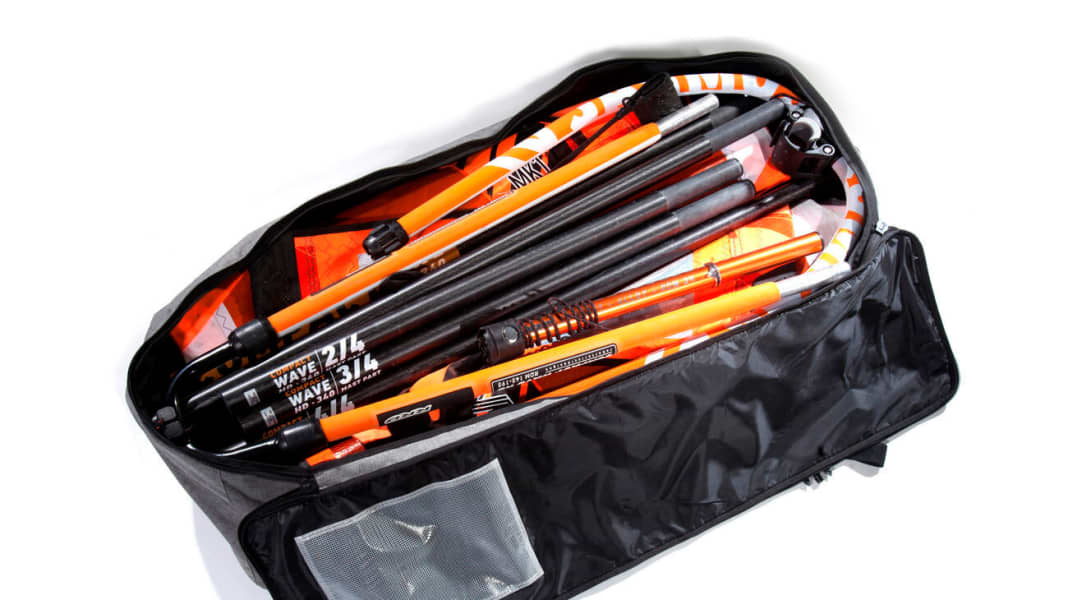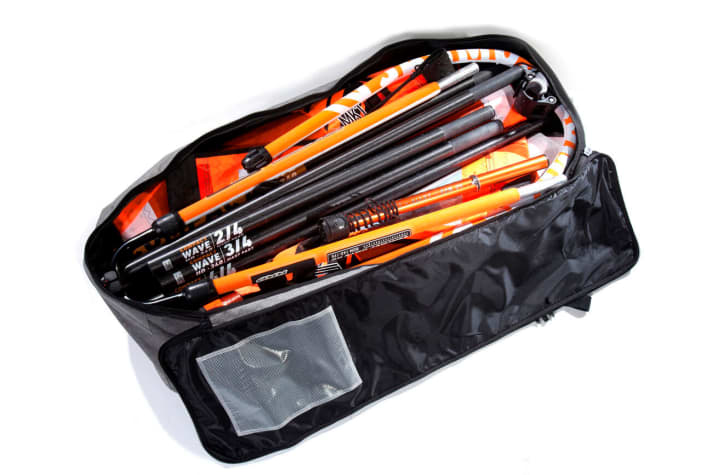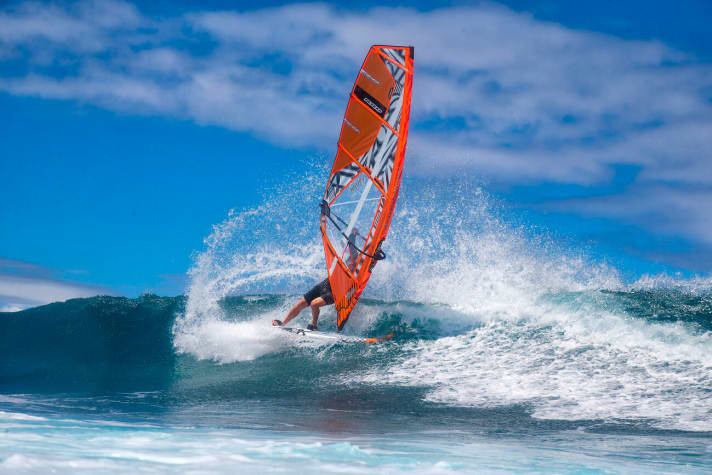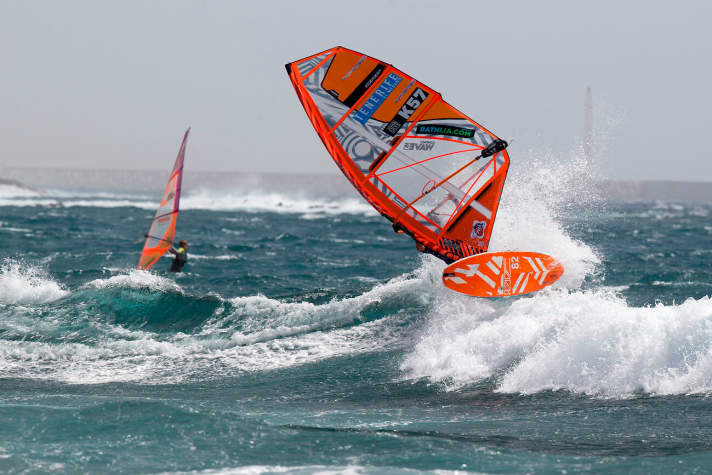

John, you're working for RRD on the promise of three rigs in one rucksack. How did you come up with this idea?
It all started three years ago when my boss, Roberto Ricci, asked me to develop a sail that would fit inflatable windsurf boards. In anticipation of the first inflatable boards, I developed a Dacron sail with a batten and was immediately caught on the wrong foot during the first test. It immediately became clear that the board, the AirWindsurf Freeride, could be used for real planing surfing if you could install a proper fin box and give the board sharp trailing edges. It was therefore clear that we also had to build a sail that would fulfil this requirement - fully battened and without compromising on performance. This resulted in the Airwindsurf rig, which can be folded and collapsed in the centre thanks to a vertically integrated Dacron sheet and separable battens. There is also a 5-piece mast and a divisible boom, which means that everything fits into one bag. In your SURF tests, you stated that it surfs like a normal sail.
So the Compact Wave Concept is the continuation of the Airwindsurf idea?

Exactly! A complete set of wave sails and accessories should fit in a rucksack. We first designed a 4.6 and took it to Maui for testing. Apart from the geometry, which we had to change a little to improve the folding, it was an instant hit. Most surfers want to get by with three sails, so we transferred the idea to common wave sizes. For the heavier riders there's the 5.3/4.6/4.0sqm combo, for lighter riders 3.5/4.0/4.6sqm.
How did you solve the mast problem? Does one mast length fit all four sizes from 3.5 to 5.3?
The fact that we have a lot of parts is an advantage in a way, we can manage without a vario top. After a lot of testing, a four-part 340 mast turned out to be the best option for the small sizes 3.5 and 4.0, plus a 60 centimetre extender to make a 400 mast that fits 4.6 and 5.3 square metres.
There is always a lot of discussion about mast bending curves - isn't this difficult to realise with a 400 mast consisting of five parts and four connectors? And won't such a mast inevitably be heavy?

In fact, we had to work for a long time to achieve a bending curve like that of a two-part mast. The first versions were still too soft in the lower section. The 5-piece mast is naturally a little heavier than a 2-piece mast, but the bending curve is identical.
The fork can also be split. Can a split fork survive in wave use? The plug connection is where the highest forces occur when landing...
At first we had the problem that the additional pin at the split point was always exactly in the grip area - of course that didn't work. That's why the fork is now split slightly behind the centre, which has solved this problem. We wanted a product without compromising on stiffness and durability, so we developed a split carbon fork: In the grip area, this has a spar diameter of only 25 millimetres, which is perfect for force-free gripping. It is slightly thicker at the rear to ensure rigidity. We then had all the components together and I was able to fly to Cape Town for testing - with three sails plus accessories in a rucksack that I didn't even have to check in as bulky luggage and that weighed less than 23 kilos.

Isn't a commitment to divisible rigs pointless as long as there is no real alternative to conventional boards for the largest component of the equipment, the board, at least in the wave area? So where is the advantage?
I think it still makes sense. As a father of two, I know how packed the car of many windsurfers usually is. The ability to simply stow three sails and accessories in one bag is a real help. Travelling by plane is also much easier - you no longer have the problem of not being able to meet the airlines' weight restrictions, which are often only 23 kilos. You check in your board in a small single bag and the rest comes with you as normal luggage! But it's not just about travelling by plane, the Compact Wave concept also has advantages in camper vans, motorhomes or on boats. With inflatable boards, we are not yet at the same level of performance as fixed boards. It's different with sails - so why shouldn't we utilise the advantage of a small pack size here?
Note: The SURF test team is currently trialling the new RRD Compact Wave concept in South Africa. In one of the next issues, you will find out whether the sail also performs on the water - or is folded up by the testers.

